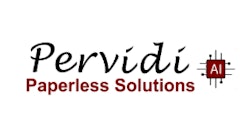
An organized business is a productive business. When you’re scaling, things get hectic. You’re wearing multiple hats – growing sales, servicing customers, sending out invoices, paying bills, keeping your employees happy – you’re juggling a lot. It’s important that you don’t get bogged down because you’re unorganized. Organization starts with your IT infrastructure.
First – digitize your documentation. Stop printing paperwork. The more digital your business is, the more efficient you’ll be. When a customer calls while you’re at a job site, you won’t have to wait until you’re back in the office to find their agreement and answer their question. When a vendor calls to ask about payment, you’ll be able to pull up a copy of their bill to discuss. If you’re not yet paperless, start today. Don’t worry about your historical documentation, just start with anything new that comes in and don’t go back!
Two key components to your IT Infrastructure in a paperless environment are folder structure and naming conventions. You want to get these two things right to avoid frustration in the future.
IT Folder Structure
First, set up a shared document environment. Regardless of whether you choose Google Drive, Microsoft SharePoint, or some other document storage platform, you want to make sure everyone who may need access to your files has it. You can set up security profiles so that certain folders or files are locked down or only available to certain team members, but you will streamline your operations if you are able to share files across your team.
Organize folders so that you will know where to find files. You want to set up your IT folder structure to align with your functional areas. Ensure all documentation gets filed in the appropriate folder as soon as received, completed, etc. Educate your team to keep all documents in these shared folders so that everyone can find what they need at any stage of the work.
Example Folder Structures:
- Administraton
- Admin Procedures
- Accounting
- Facilities
- HR-people
- IT
- Operations
- Operation Procedures
- Projects
- Scheduling
- Sales & Marketing
- Sales & Marketing Procedures
- Marketing
-Sales
Naming Conventions
Once you have determined the appropriate file structure for your business, it is important to determine how you’re going to name files. It is easy to find documents when you are in a paperless environment, but only if you name them in a way that you can do so.
Set standard naming conventions so that everyone in your company names files the same way. This helps you easily find what you need, when you need it. First, determine the structure you’ll use for your naming conventions. Start with a standard for the header. For example, you may choose to do all capital letters for your header or start with a number or abbreviation. The header will be different based on what type of file you’re naming, but the structure should be consistent across each type of file. For example, you might use CAPITALLETTERS as your header, where CAPITALLETTERS is the type of document you’re saving, such as CUSTOMERAGREEMENT.
After you’ve determined your header, it’s good to add a date to your file name. This helps you to differentiate files, for example, a customer agreement for a 2020 project versus a 2023 project. Make sure everyone is consistent with the date format being used. For example – MM.DD.YY or MM.YYYY. This will help files to align and also tell you if a document is related to a specific date or maybe a period of time.
After the date, add the customer name/vendor name/company name. This tells you who the document relates to. For example – CUSTOMERAGREEMENT – 05.23.23 – ABC Company.
And, finally, you’ll want to include any additional information that will help you to distinguish the document. This is especially helpful if you sign multiple agreements with customers or have multiple insurance policies, etc. For example – CUSTOMERAGREEMENT – 05.23.23 – ABC Company (12345 Driveway).
Standard File Type Examples:
- CUSTOMERAGREEMENT – MM.DD.YY – Customer Name (Office Parking Lot)
- VENDORUPDATE – MM.DD.YY – Vendor Name (Payment address change)
- DEPOSIT – MM.DD.YY – Bank Account Name
- PMTCC – MM.DD.YY – Vendor Name (cc x1234)
- MONTHLYP&L – MM.YYYY – Company Name
- POLICY – MM.DD.YY – MM.DD.YY – Travelers (Workers Comp)
Having a good folder structure and standardized naming conventions will save you time and headache, allowing your business to operate more effectively. Check out the two examples below and you’ll see why.
Example – January 2022 Financial Support Folder with Standard Naming

Example – January 2022 Financial Support Folder without Standard Naming




















